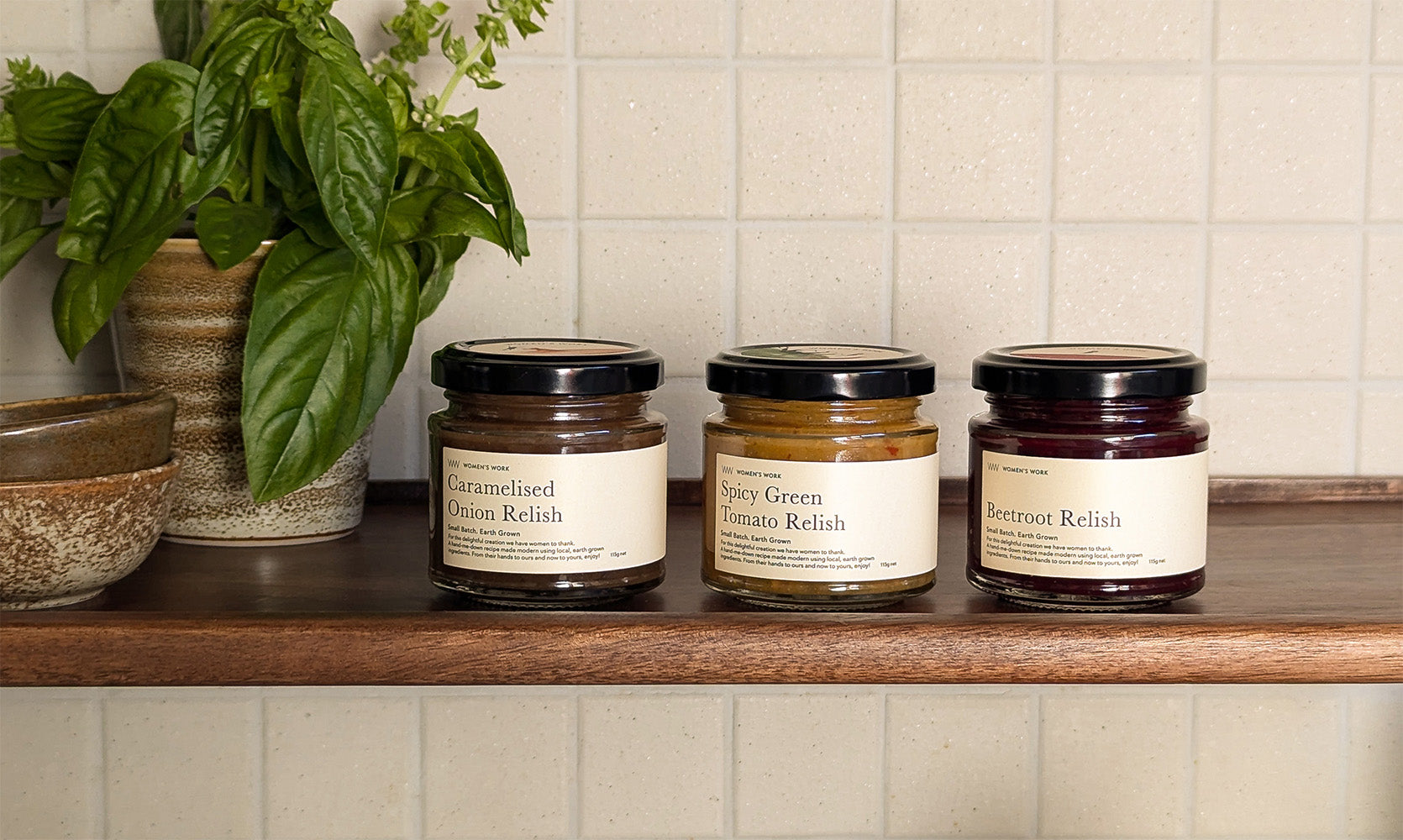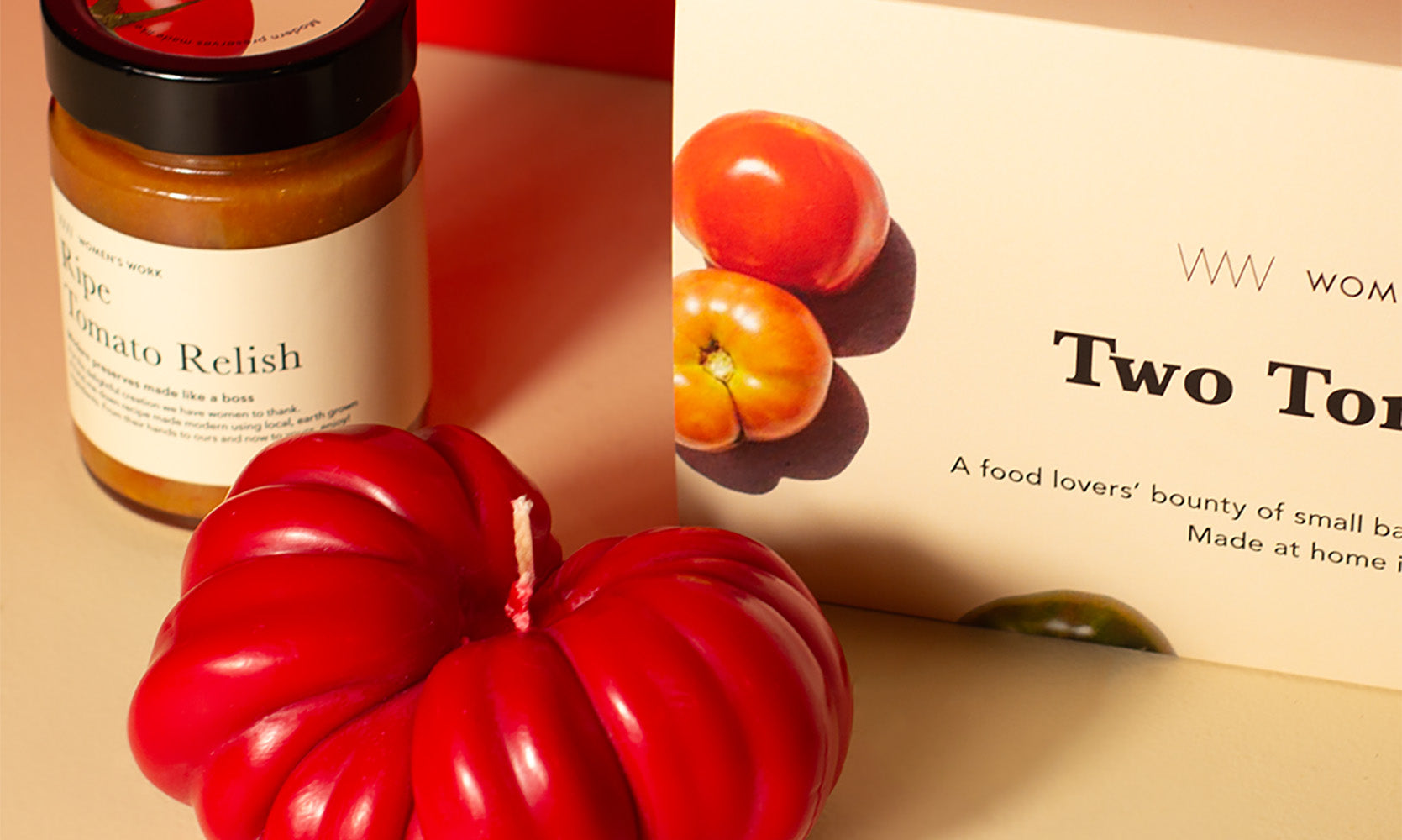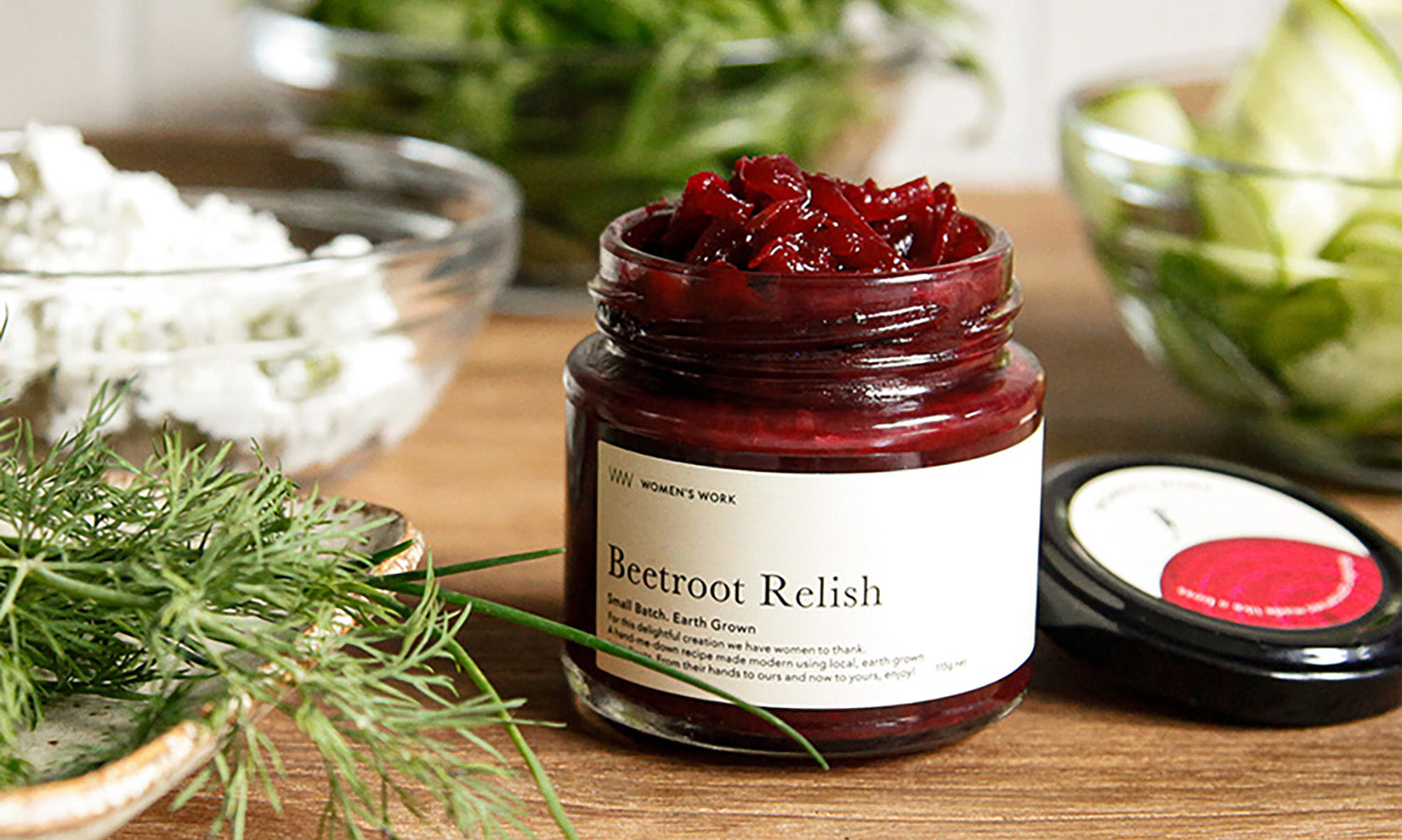There are many different opinions on this question, and many kinds of reasons for the different opinions. We have read everything we can on the subject and decided for ourselves that our relish is a savoury, mostly, but not always, vegetable based preserve that does not have dominant sweetness, but rather more complex sweet/sour combined with other flavour profiles. Its texture is chunky with produce although smooth enough to spread. Chutney, for us, always contains fruit, even if it is not fruit based. Therefore, chutney has a predominantly sweet flavour profile. It usually has a ‘heavier’ texture than relish. Pickles, according to us, are mostly vegetable (lime pickles being an obvious and delicious exception) and are usually highly acid with a dominant sour flavour profile. Pickles can be spreadable having a light ‘sauce’, but are often bottled in clear, spiced vinegar which can be tipped off and used in cooking and salad dressings.
Our relish is naturaly preserved using age old techniques and all natural ingredients. they have a very low Ph making them very shelf stable and safe. Unopened, they can be stored in a cool, dark pantry for up to 2 years from the date of manufacture. Once opened, please store in the fridge for up to 1 month (they will last a lot longer than this but this is a very safe recommendation).
We package our product super carefully to reduce the chance
of any breakages but unfortunately, being glass jars, we do occasionally
experience damage during transit. If your order arrives in less than perfect
condition please email us at hello@womenswork.com.au
or via our contact page with images of the damage (so we can follow up with our
courier) and we will have a full replacement out to you ASAP.
We offer a 100% happiness guarantee, if you are not happy
with your product for any reason, please contact us at hello@womenswork.com.au
and we will organise an exchange or refund. Please see our Returns and Refund Policy for more info https://womenswork.com.au/pages/shipping-returns
Our products are artisan made rather than mass produced. Mass produced products are made to be consistent, not only with every item made, but with the type of machinery being used to make them. Our products are made by human hands in small batches with produce that has been grown locally. Just as wines that have the same ingredients vary according to the conditions of the seasons in which the fruit grows, our relishes vary in colour, sometimes texture, and even a little in flavour according to how much rain there has been, what side of the paddock they are grown in or when they are harvested, for a few examples. They also vary because, unlike mass produced products, we adjust the amount of sugar we add according to how sweet the produce is naturally. We try to add as little as possible but still maintain fundamental consistency of flavour – we also need to add some sugar to support natural preservation of our products.
We only use locally grown produce for our products and we only use those products when they are in season. We make as many jars of our varieties as we can while the bounty of the season allows, but when they are gone, they are gone until the next season. Needless to say, we are very busy making in the summer and autumn months. In the winter, we usually only have the lemon pepper relish to make because that is when the lemons are in season. Consequently, we often run out of lemon pepper first, not only because it is popular, but because its season isn’t consistent with our other products. It’s a little like a winery making olive oil in the off season.
A lid is over tight because of the natural vacuum seal produced during our bottling process. It’s actually a good thing that protects the product and supports a long shelf life. It can be frustrating when you’re dying to get into your relish though! We use a rubber strap wrench which is available in the plumbing supplies of hardware stores which is fail safe. The best way other than that is to run the lid of the jar under very hot water for about 30 seconds and then try. Please don’t ‘tap’ the lid of the jar on benchtops or ‘whack’ the lid with a spoon handle. We would hate for any damage done to the glass or lid to become dangerous to you.
Relishes are traditionally used to compliment main dishes. They provide flavour and texture contrast as well as spicing up plain food or ‘cooling down’ spicy food. There is, however, truly no end to their uses. They can be used as an ingredient in soups, pasta, stews, quiches, gravies, sauces or anything. They can be eaten as part of a cheese and/or charcuterie board. Many people put them on biscuits and eat them on their own. We can’t eat sandwiches without relish and when we go to a café for breakfast and they give us tomato sauce rather than relish with our eggs we never go back. Same with burgers.
Don’t eat it! Just let us know and we’ll replace it. We check the seal on all our products regularly, and we will never deliberately send a product out with a broken seal, so it’s unlikely to be dangerous to eat, but it’s not worth taking chances.
Our full range is availiable on-line (obviously LOL). Our products can also be found in a number of boutique and premium outlets across the country. Please see our 'Store Locator'
We will fulfill and have your order booked in for courier collection within 24 hours. On average we find your order will be delivered within 3 working days of collection.
We don’t use any additives or stabilisers in our products so sometimes there is a little natural ‘separation’ especially if the jar has been sitting still for a while. This will have no impact on flavour or quality. Just stir the jar before serving, or shake it before opening or gifting.




